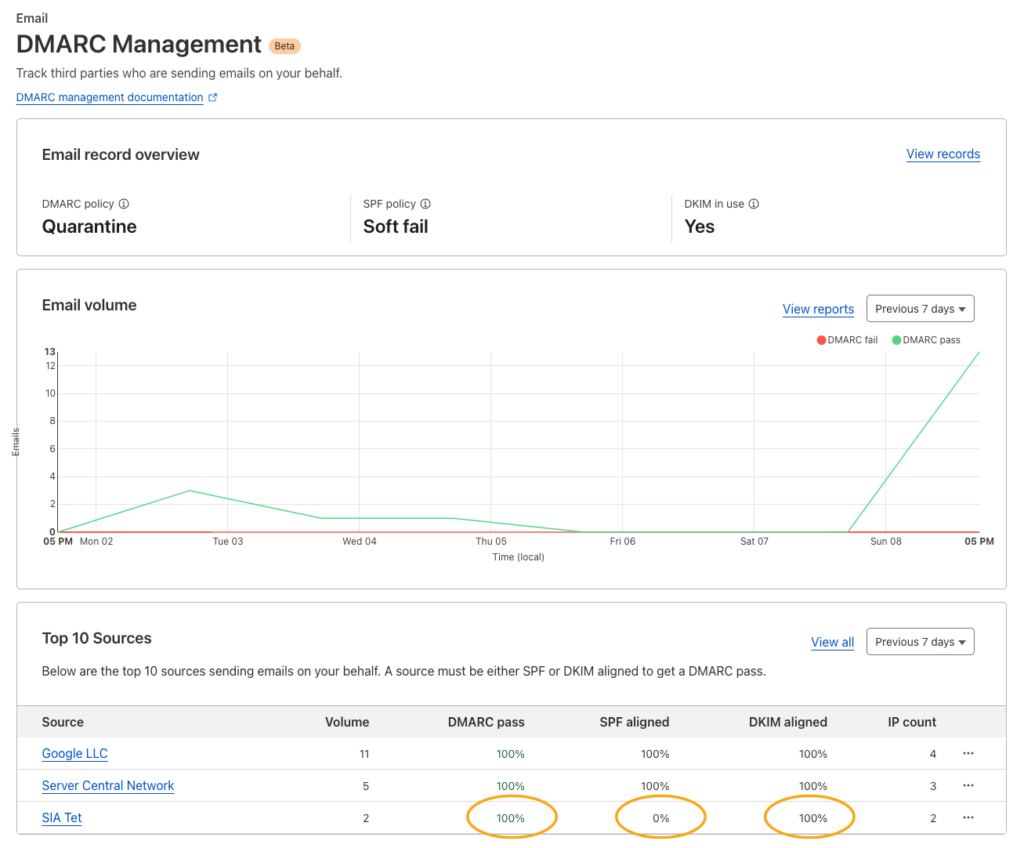If you’re clicking all over in your Pipedrive account looking for how to generate an SPF record, we have good and bad news for you: it doesn’t exist.
SPF records aren’t supported in Pipedrive, but they also aren’t strictly needed.
Let’s explain.
SPF (Sender Policy Framework) records are simply one method of email domain authentication. The goals of email authentication are to guard against others sending emails impersonating you or your business and to help make sure that emails you actually send aren’t marked as spam (because they weren’t properly authenticated).
Email authentication can be done through SPF records, DKIM (DomainKeys Identified Mail) records, or both.
When a mail server receives an email, it checks if the messages passed or failed DKIM and/or SPF tests. The DMARC (Domain-based Message Authentication, Reporting, and Conformance) policy settings then tell the server what to do with emails that don’t pass (deliver normally, send to spam, or reject).
Why doesn’t Pipedrive support SPF records?
According to the Pipedrive Team, “Pipedrive, as a CRM tool, doesn’t provide its own mail server. Instead it integrates with your existing email provider…to sync emails.”
How to authenticate your email domain in Pipedrive without SPF
- Instead of SPF records, generate a DKIM record in Pipedrive.
- Add CNAME and TXT records in the DNS records with your domain host.
- Turn on DMARC reporting in your domain dashboard so you can check your DKIM alignment status.
- Check your Pipedrive domain authentication status to confirm it says “authenticated” (This can take up to 48 hours after you add the DKIM records with your host, but it’s usually faster. Click “refresh status” to re-check).
- Send a test email from your Pipedrive account.
- Check the DMARC report to confirm you show 100% DKIM alignment on emails sent after you added the DKIM records.
- Confirm your DMARC pass/fail status says “pass”

Recommended follow ups
If you have a 100% DKIM alignment, you can still achieve DMARC pass without SPF. You’ll be able to tell your mail server how to handle any emails that don’t pass DMARC. Technically you can stop there.
However, as we shared, it’s highly recommended, though not mandatory to set up both DKIM and SPF records for your email domain.
Ask your email provider for help if you’d still like to configure SPF records for an additional level of email authentication protection for your Pipedrive emails.








